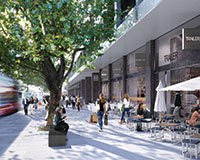 The Court of Appeal has been asked to bring clarity to the tree preservation and tree replacement regimes by providing a ruling on what exactly constitutes a tree.
The Court of Appeal has been asked to bring clarity to the tree preservation and tree replacement regimes by providing a ruling on what exactly constitutes a tree.
In a dispute over land in Sunningdale in Berkshire, Christopher Boyle QC told the Court of Appeal that, as a result of Holgate J’s High Court ruling in the case earlier this year, there is now “conflicting authority on the question of whether a ‘tree’ includes a ‘potential tree’, or very young specimens, such as a ‘seedling’ or a ‘sprouting acorn’”.
He said that the issue is “fundamental” to the operation of the tree preservation order (“TPO”) and tree replacement notice (“TRN”) regimes, as the Town and Country Planning Act 1990 does not contain a definition of “tree”.
He continued: “The issue of whether a tree includes a ‘seedling’ or a ‘potential tree’ will affect what specimens a local planning authority can protect under a TPO (section 198); whether the impact on young specimens, such as seedlings, is a material consideration when granting planning permission (section 197); and whether it is a criminal offence to cut down, uproot or willfully destroy a seedling or a ‘potential tree’ (section 210).”
Richard Kimblin argued on behalf of the secretary of state that “tree” includes small trees without limitation on size, because the legislation does not provide for exclusion or exemption on grounds of size, whereas other legislation does.
He said that the true issue is whether trees of any size in a woodland are protected, and that the answer to that question is “yes”.
The court has now reserved its decision in the case, in which landowner Distinctive Properties (Ascot) is challenging an inspector’s decision dismissing its appeal against a TRN requiring them to plant more than 1,200 trees on the site.
The Royal Borough of Windsor and Maidenhead issued the TRN in January 2014, requiring 1,280 trees to be replanted.
But Distinctive says its only duty TPO covering the land is to replace any trees that have actually been removed, uprooted or destroyed, and that, while a contractor removed vegetation in 2012, it denies uprooting or destroying any trees.
The court has reserved judgment.
Distinctive Properties (Ascot) Ltd v Secretary of State for Communities and Local Government Court of Appeal ( ) 17 November 2015







